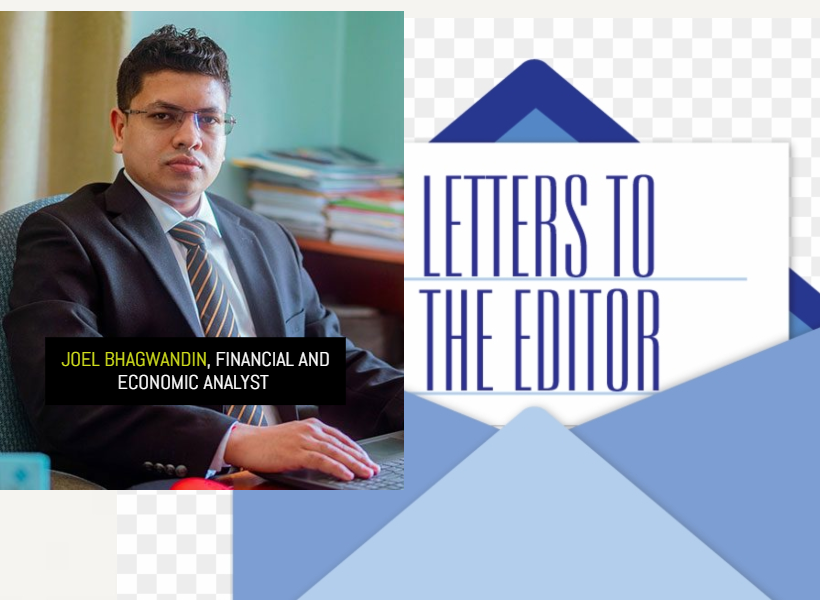Dear Editor,
Christopher Ram, in his quest for relevance from time to time, has once again failed to demonstrate a thorough understanding of the foreign currency issue. The dynamics of the foreign exchange (forex) market and the economy at large are very different from six years ago.
For the students of finance and economics who may read Ram’s recent article published in the Stabroek News, he is not entirely correct when he said that “the central bank does not make policy but only carries out policies set by the government.” This is not a correct interpretation of how the central bank operates. Macroeconomic policies include both fiscal policies, which is a function of the central government, and monetary policy, which is a function of the central bank.
This means that the central bank’s primary function is to manage the money supply of the economy and implement appropriate monetary policy that synchronizes with the fiscal policy stance or philosophy of the government. The fiscal policy stance can either be contractionary or expansionary. To facilitate growth and development, you need to implement expansionary fiscal policies.
In respect of Ram’s argument that the Production Sharing Agreement (PSA) / the oil companies is/are responsible for the forex shortage, I must say that he is completely off on this one. The PSA has nothing to do with the forex shortage and as I have argued and demonstrated previously (which the authorities also confirmed) is that there is no real forex shortage. As of January 2023, the commercial banks’ net foreign sector assets / forex stood at US$446 million, and for the same period, the international reserve of the central bank stood at US$932 million― so where’s the shortage?
The forex issue is a temporary problem and more so, it is a microeconomic problem and not a macroeconomic problem given the numbers cited above on the banking sector’s foreign sector assets. Following the government’s intervention which was instructive, the appropriate remedy was proposed by the government and―that is, for the market players, namely, the private sector, the Bankers’ Association, and the central bank, to meet and collaboratively seek to resolve the issues among themselves. There is no need for a policy intervention on the part of the government or the central bank because the issue has not manifested into a macro issue. There are certain deficiencies in how the market operates, for example the inter-bank market, which has to be resolved among the market players.
Moreover, there is a far more critical reason why the government or central bank cannot intervene in a major way (which is what the private sector had been pushing for) that is for the central bank to inject forex into the system. The government cannot afford to flood the market with forex because this will naturally engender the dreaded Dutch disease. If the market is flooded, there is a real risk of a sharp appreciation of the G$ against the US$.
For the sake of demonstration, let’s say this happens, and the exchange rate appreciates to $112 (where it previously was in 1991 followed by the devaluation of the currency back then), and let’s use the Bank of Guyana average rate of $208.5, this is effectively an appreciation $96.5 or 86%.
In 2021, non-oil exports stood at US$1.343 billion, and imports stood at US$4.376 billion. Using the BOG’s current (average) exchange rate of $208.5, the G$ equivalent are, imports – $912.4 billion and non-oil exports – $280 billion. Now, let’s adjust the rate at $112, the adjusted G$ equivalent are as follows:
Import – $490 billion, down from $912 billion, and non-oil exports – $150.4 billion, down from $280 billion.
Effectively, this translates to imports becoming cheaper where there is a saving of some $422.3 billion that the importers will benefit from, which they are unlikely to pass on to consumers. So, therefore, these huge savings will go straight to the importer’s bottom line.
Conversely, the non-oil exporters will suffer a loss of export earnings to the tune of $129.6 billion, wherein their export earnings suddenly fell from $280 billion to $150 billion. In other words, exports become more expensive or less competitive in the international markets and imports become cheaper.
The result is that the non-oil export sector will die at the expense of the importers. The importers will get stinkingly richer and the exporters poorer. Imagine companies in the export sector going bankrupt, loss of thousands of jobs, aggregate demand will start to dwindle as a consequence, imagine what will happen to the broader economy. This demonstration is exactly what characterizes the Dutch disease.
It is for this reason that the hoarding of forex by commercial banks―is both a good thing and a bad thing, which needs to be managed carefully, given the sensitivities, and this is precisely why the government said to the private sector, that they need to resolve these issues with the bankers and the central bank. The overseas investment (hoarding) of forex is helping to stave off the Dutch disease as previously demonstrated. The temporary shortage can be fixed in the short term because the commercial banks are comforted by the fact that the drawdown from Natural Resource Fund (NRF) brings in forex inflows as well to the central bank which they can purchase to meet the domestic demand instead of breaking their overseas investments.
With this in mind, it is through moral suasion―that the Government is confident that the forex issue can be dealt with and resolved because the alternative which is to strong-arm the banks to release all those foreign exchange into the system―would be dangerous to the macroeconomy (Dutch disease).
Ironically, with this explanation, if it is understood well, one would quickly recognize that what Chris Ram is suggesting, will in fact engender the Dutch disease because he wants the oil companies to have all of their forex balances in the local banking system. We have long moved away from the days when we were not a free-market economy and there were tight forex controls, price controls, and capital control by the State (the socialist days). We no longer have these controls and that is how an open market economy works―wherein there is free movement of capital inflows and outflows.
Mr. Ram seems to want us to revert to those socialist days from where we came from: a once bankrupt economy. Manifestly, he doesn’t fully understand the issues and all of the different variables and risks.
The Government clearly understands the dynamism of these macro and micro issues and the inherent and systemic risks. As such, the Government has employed an appropriate strategy to address this situation, inter alia, moral suasion. Considering, as well that this is a temporary issue that may occur from time to time for short periods, and more so, it is a microeconomic issue and not a macroeconomic issue. Therefore, it does not merit a macro response on the part of the Government.
Yours sincerely,
Joel Bhagwandin
Financial, Economic and Public Policy Analyst









